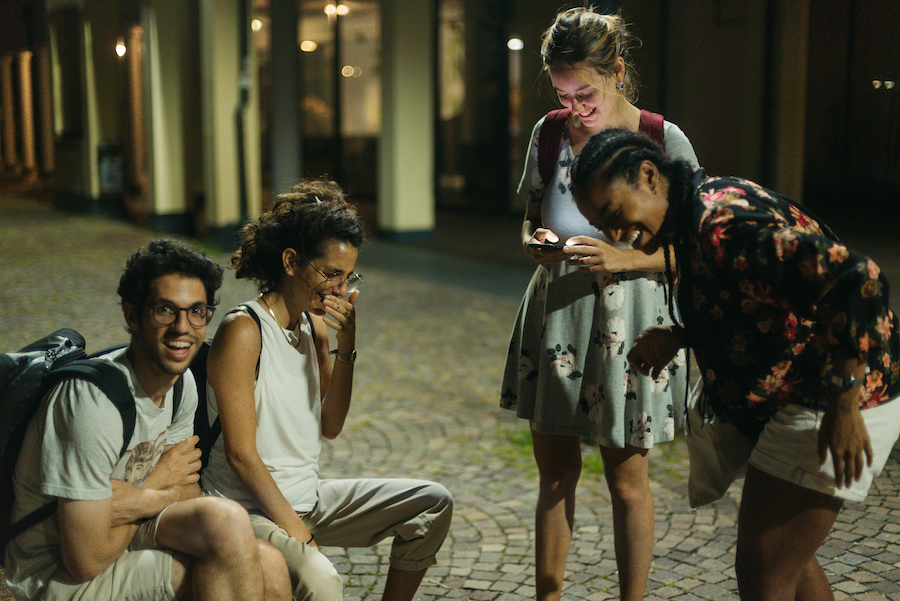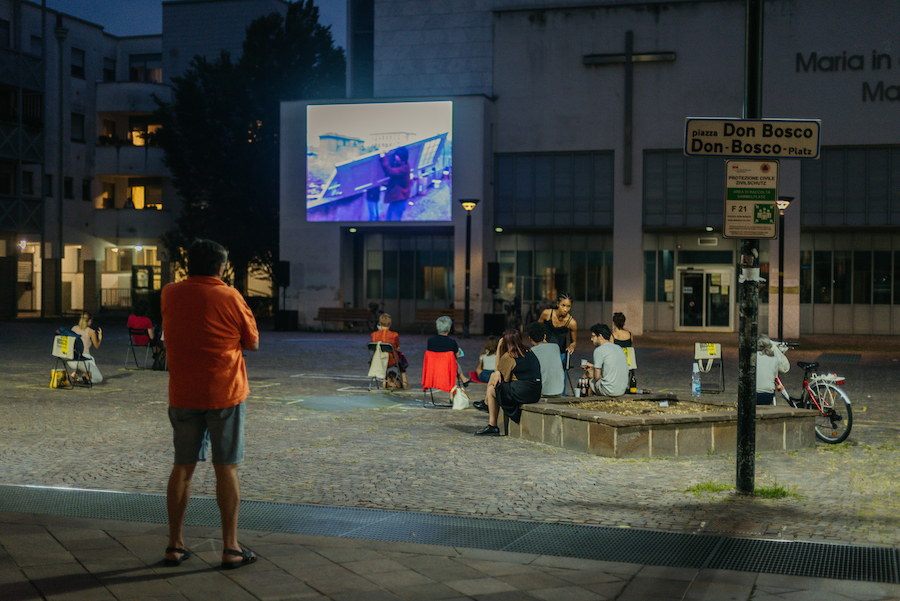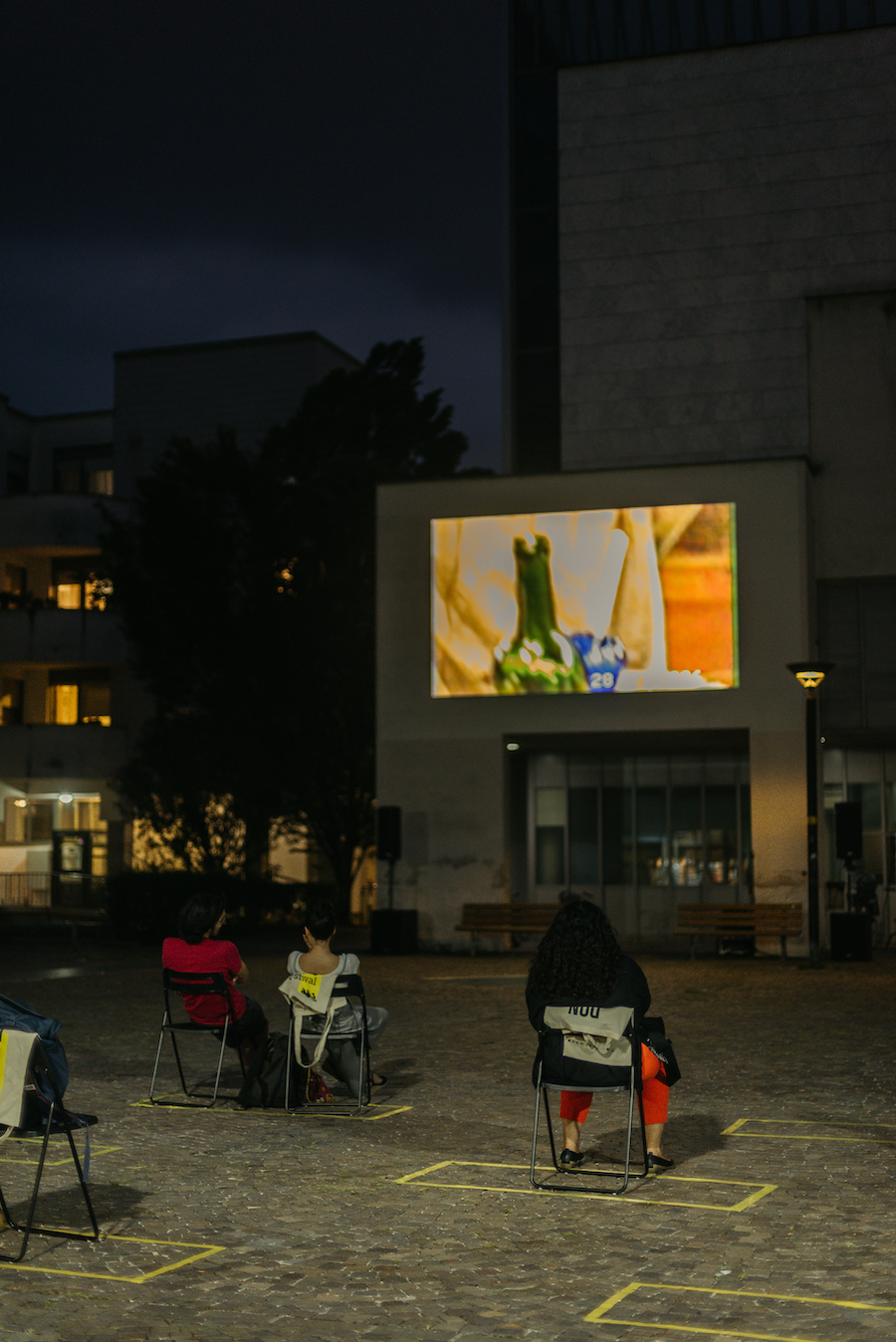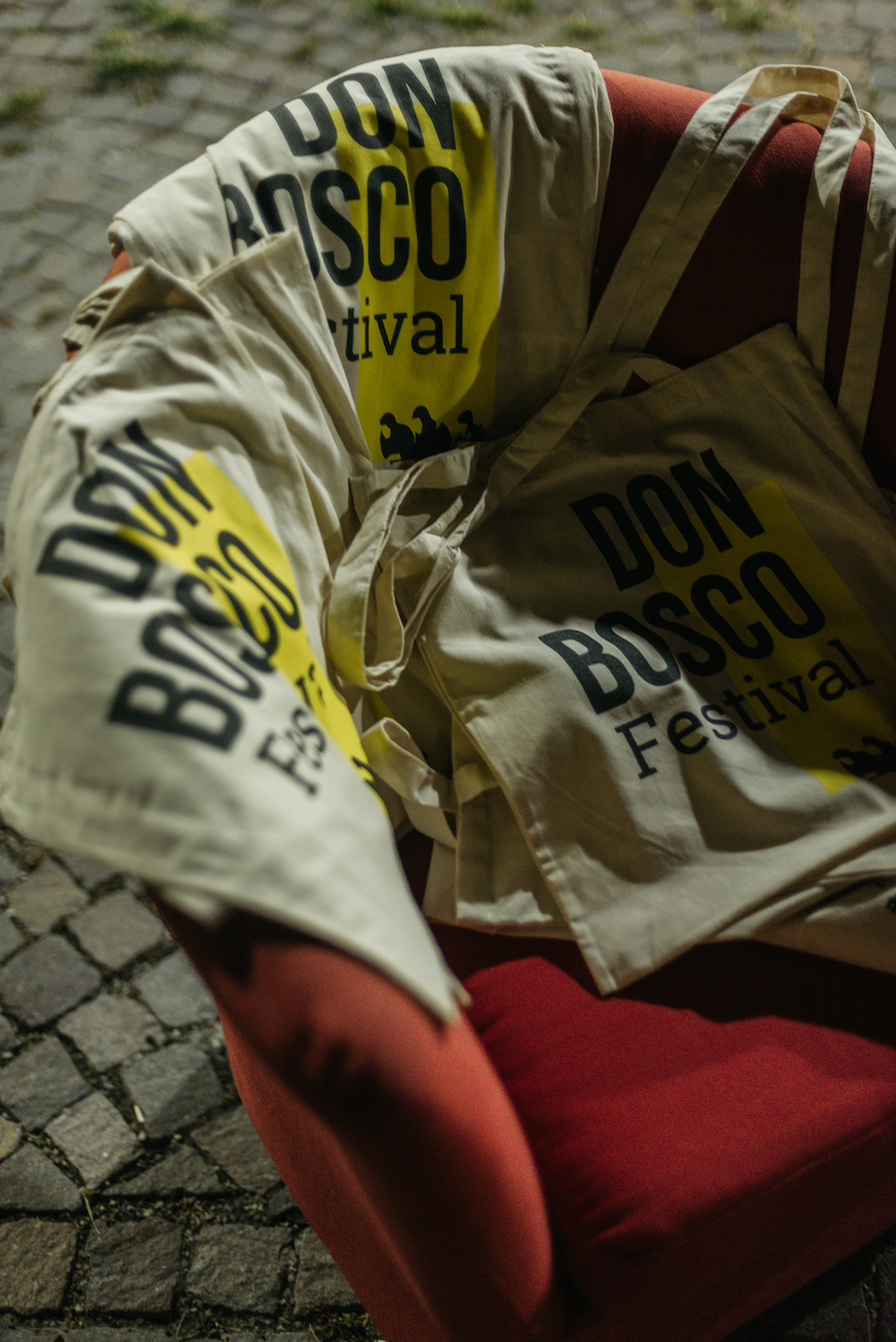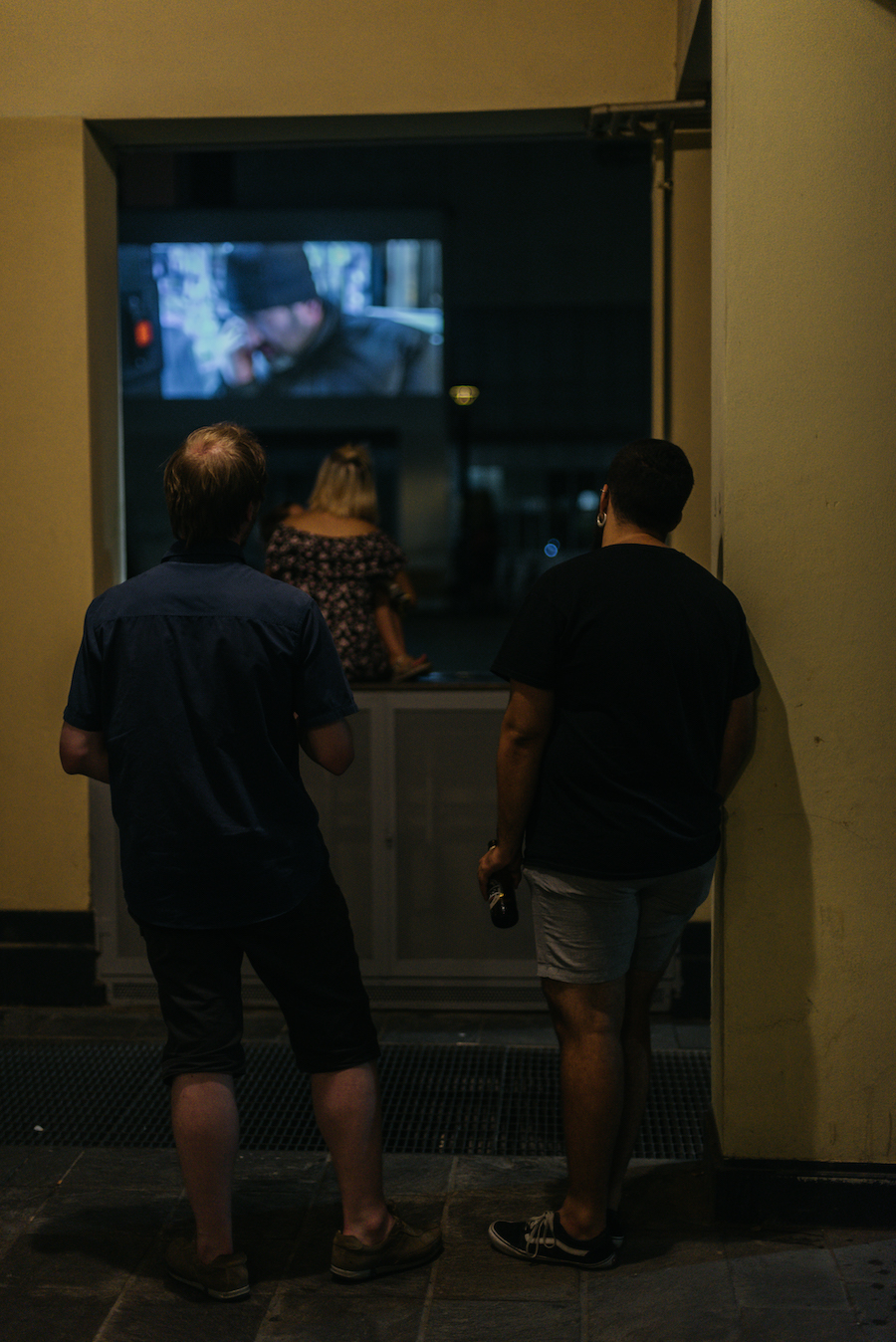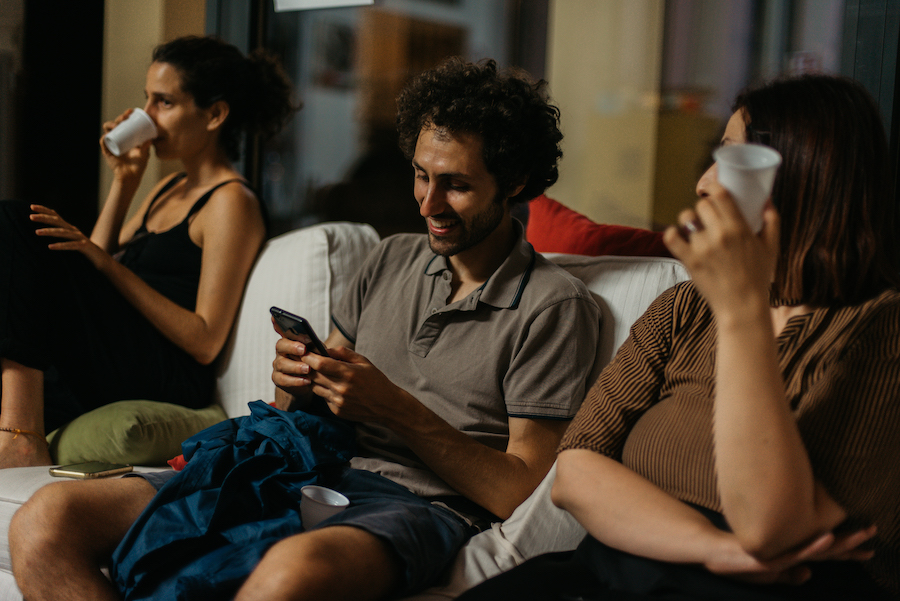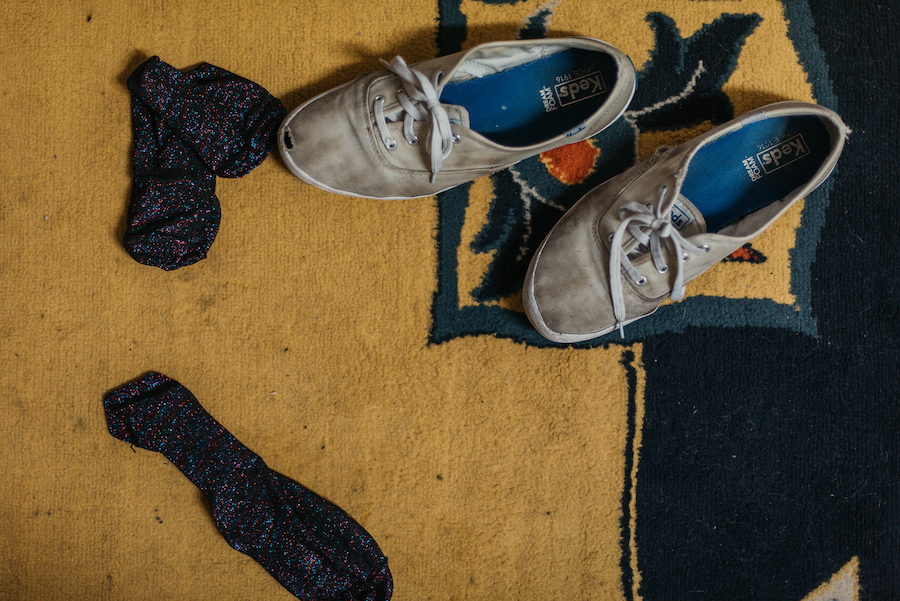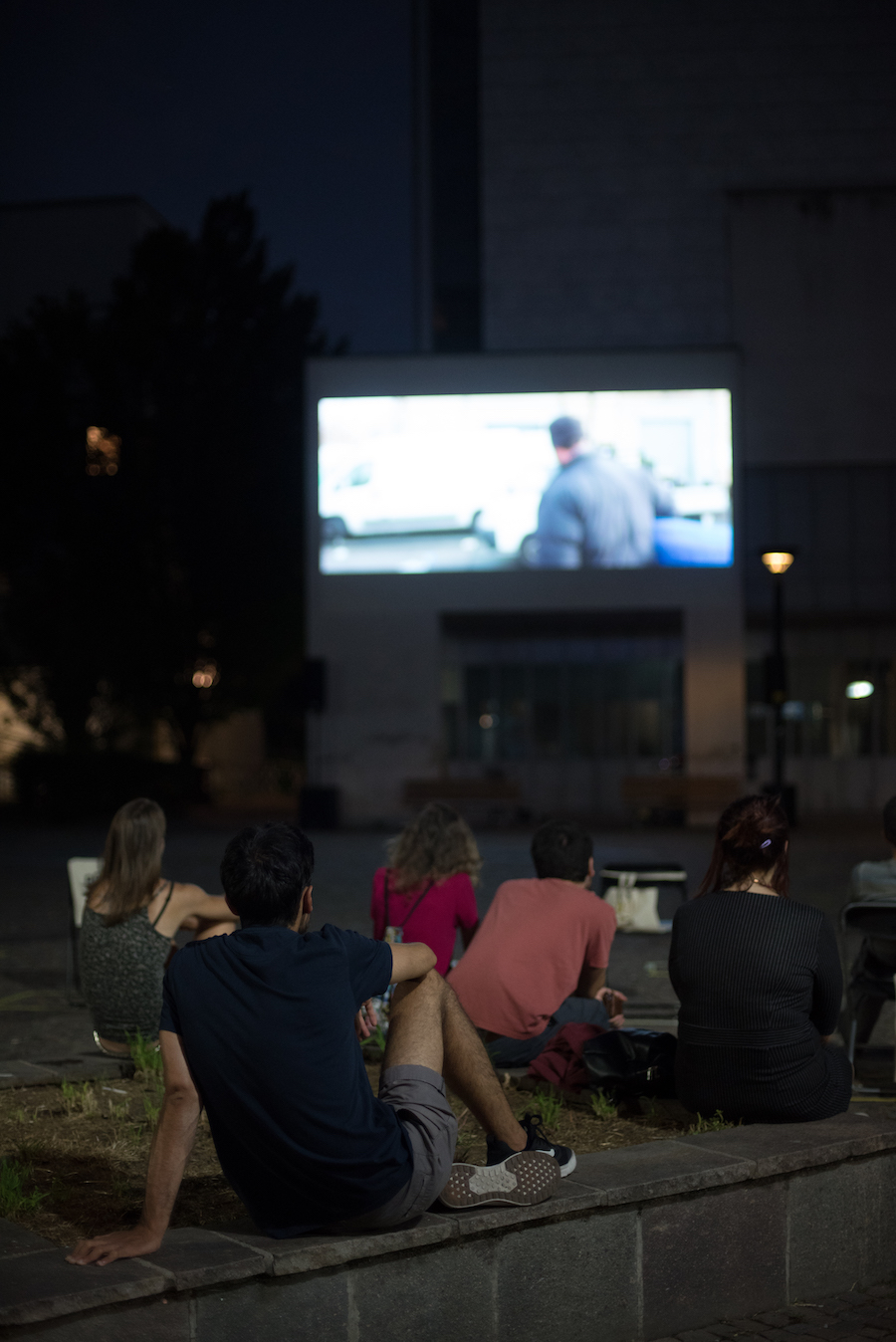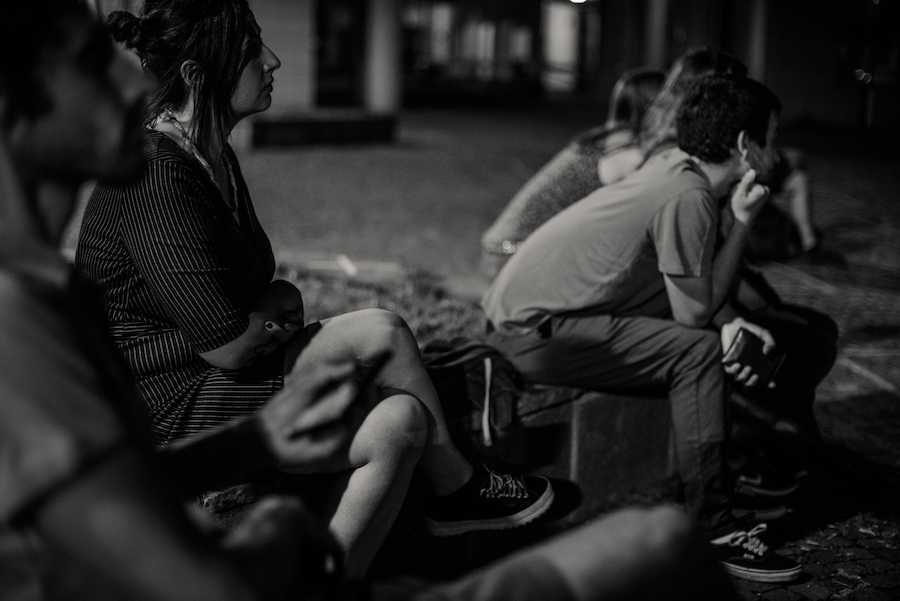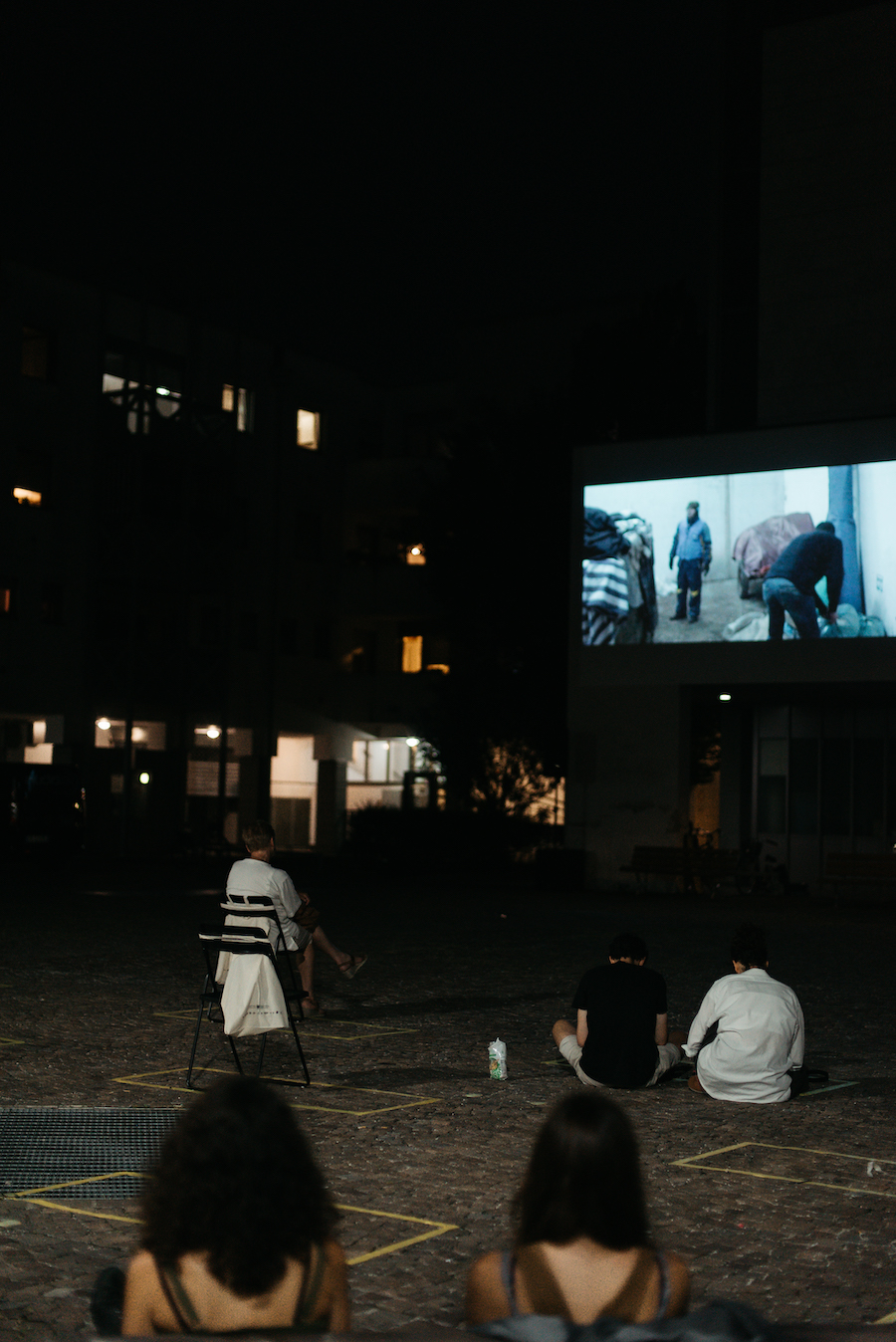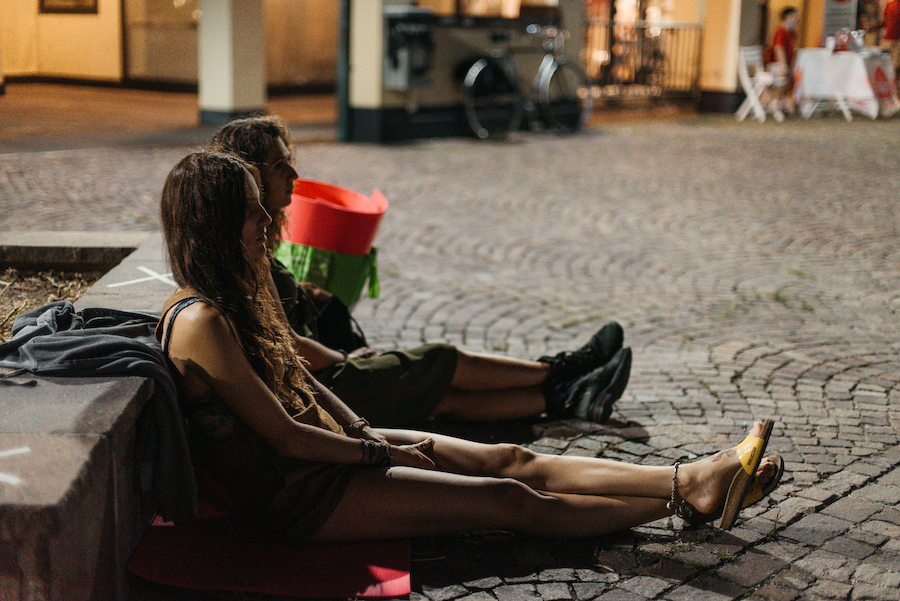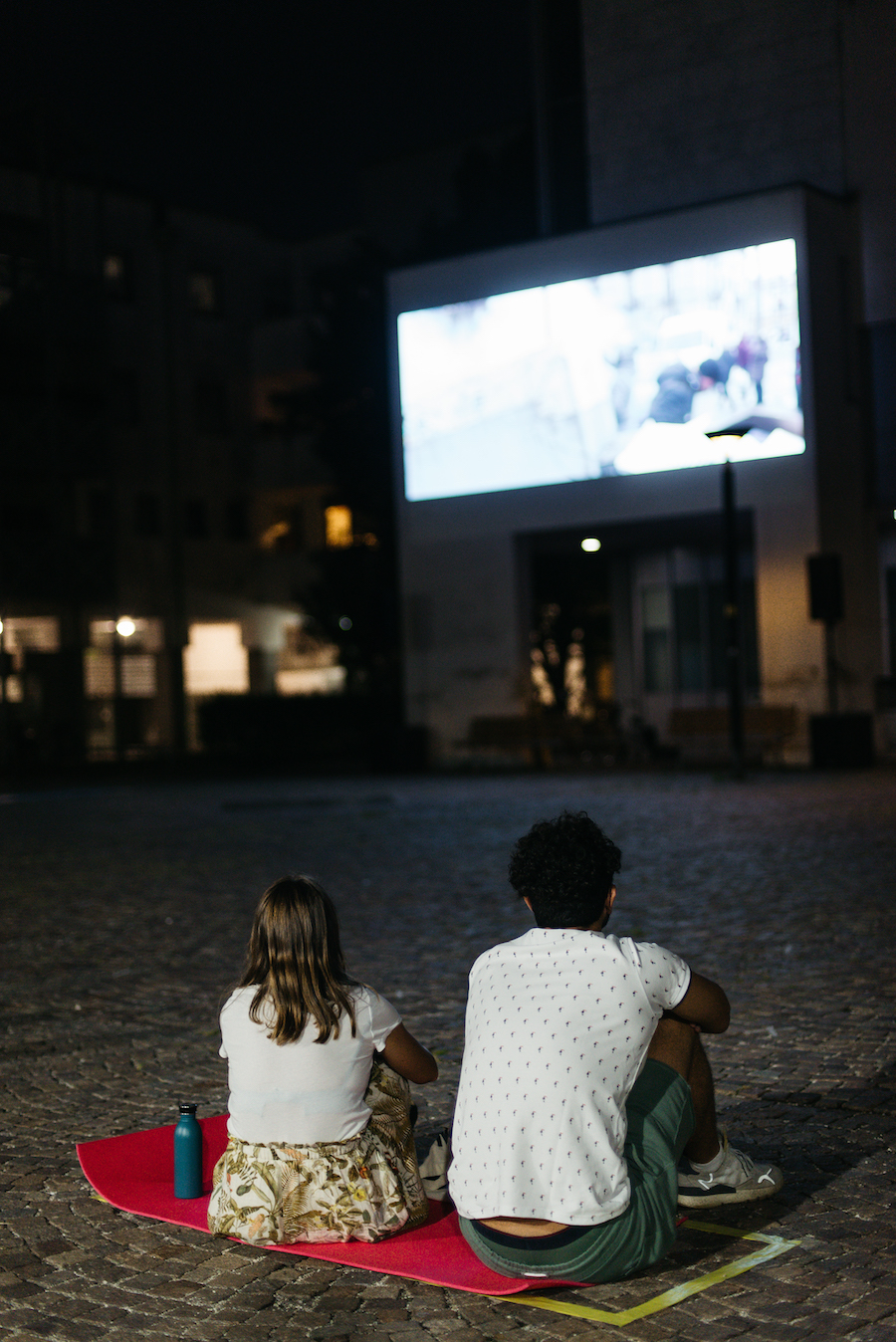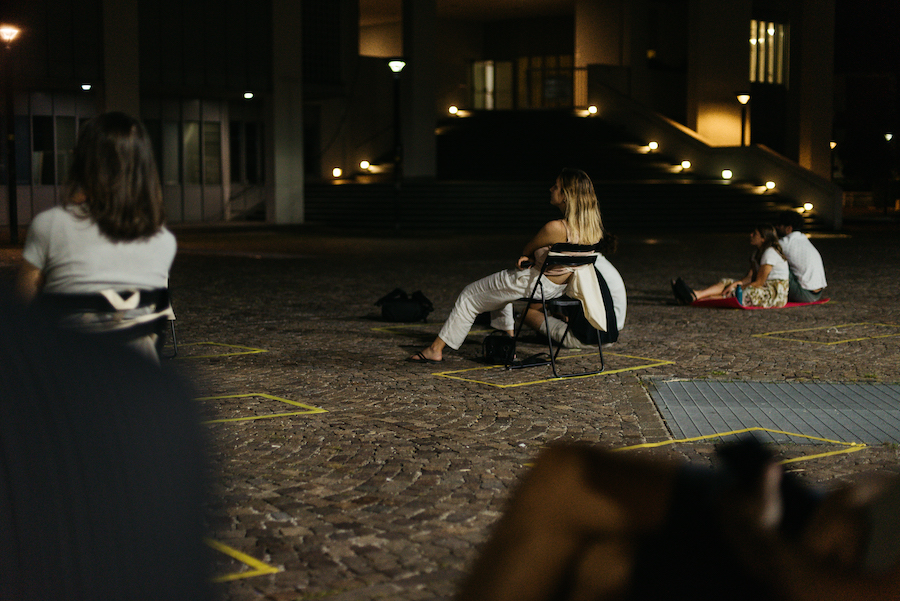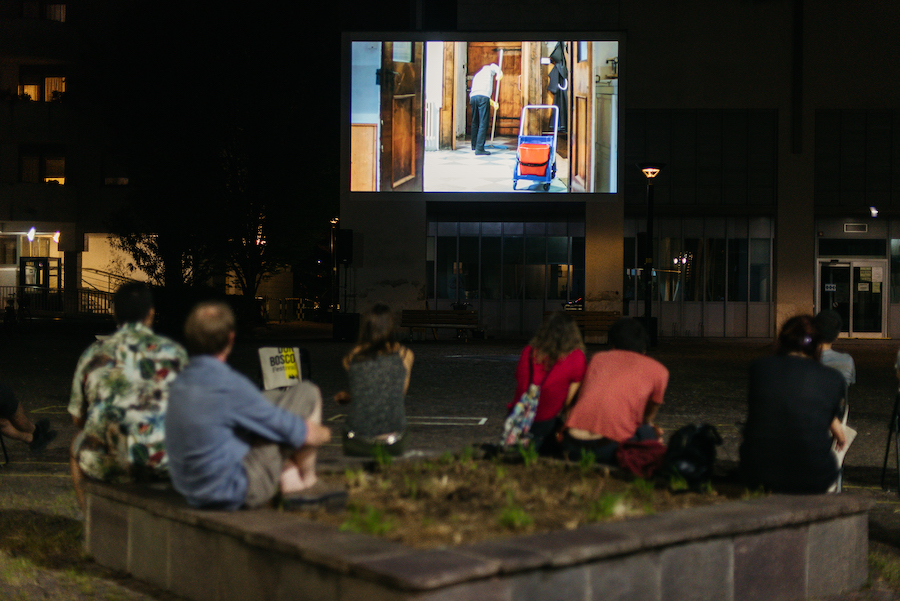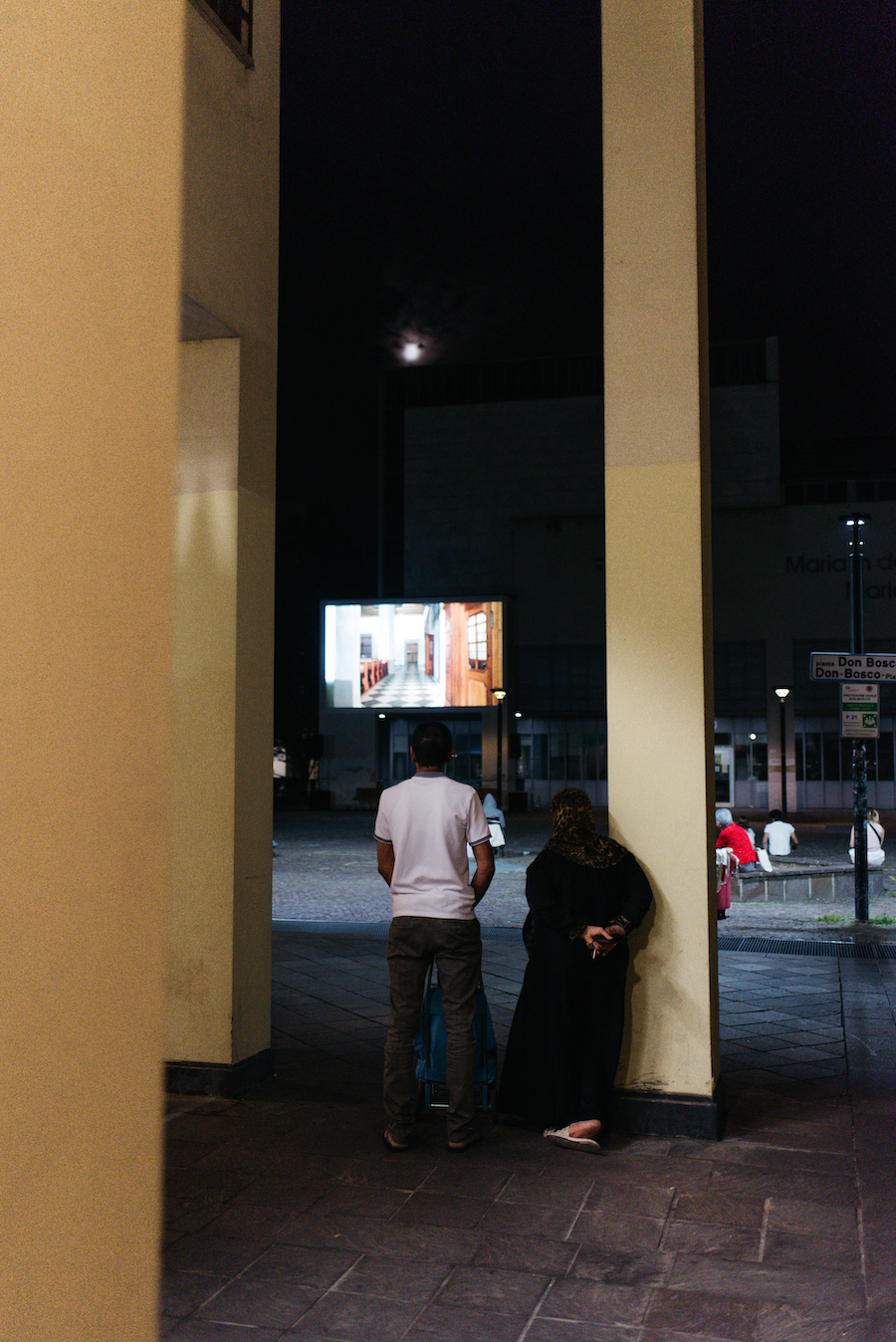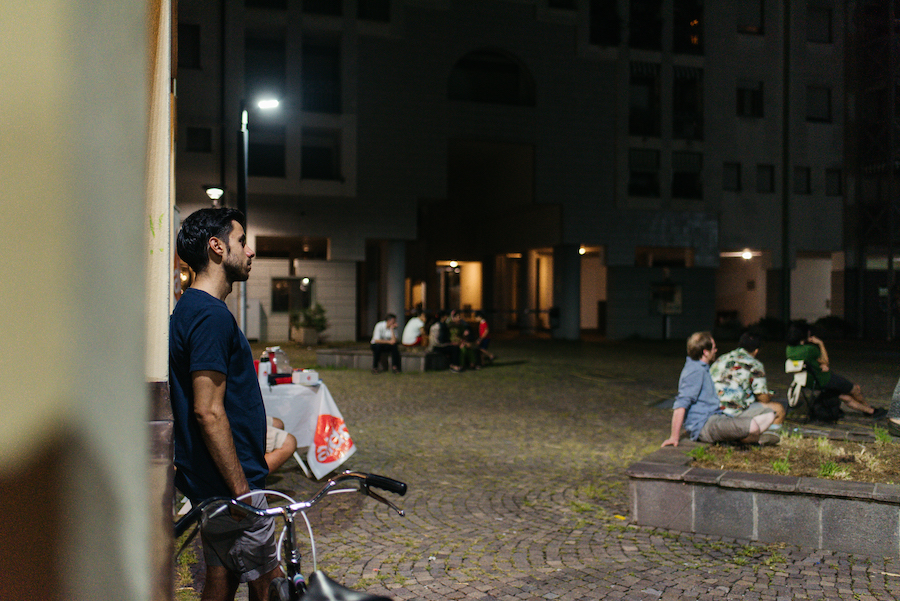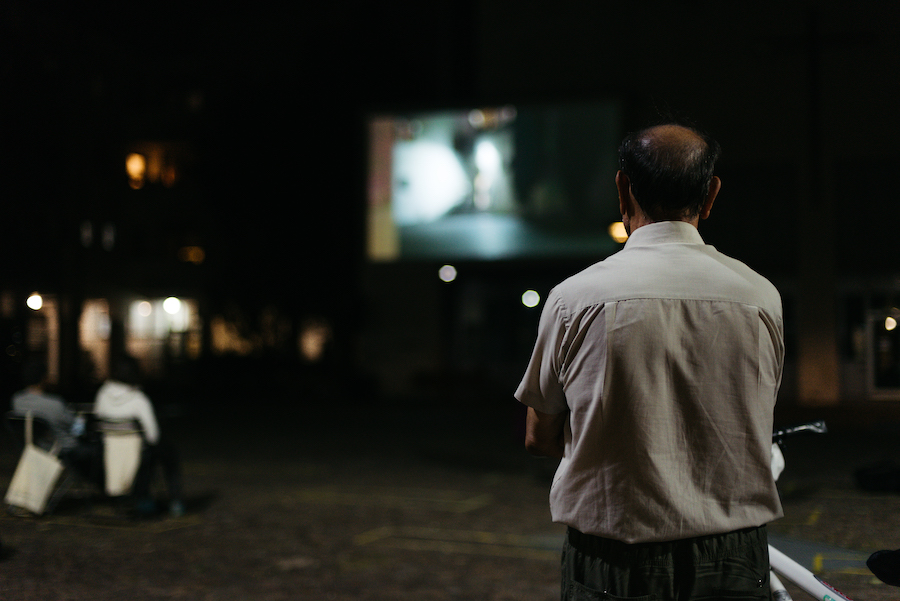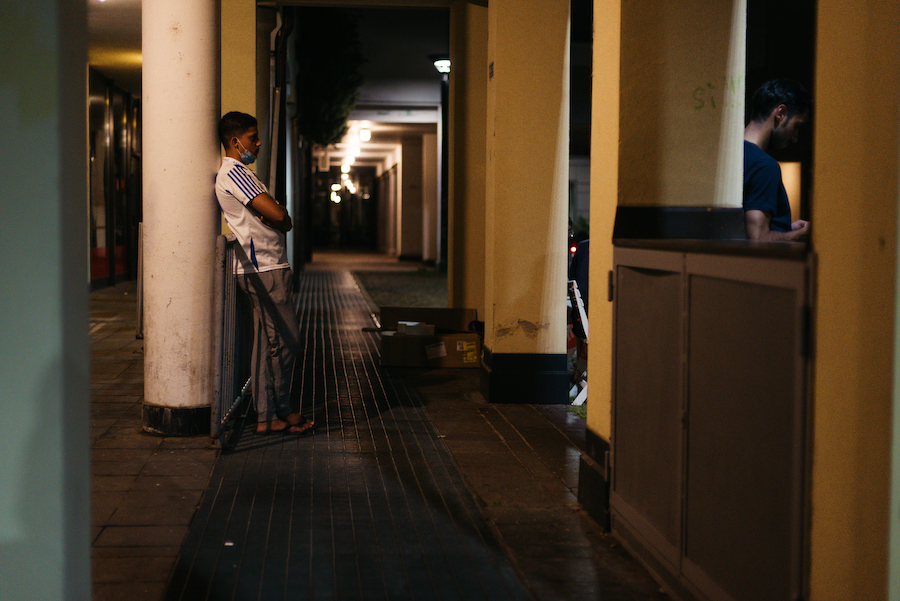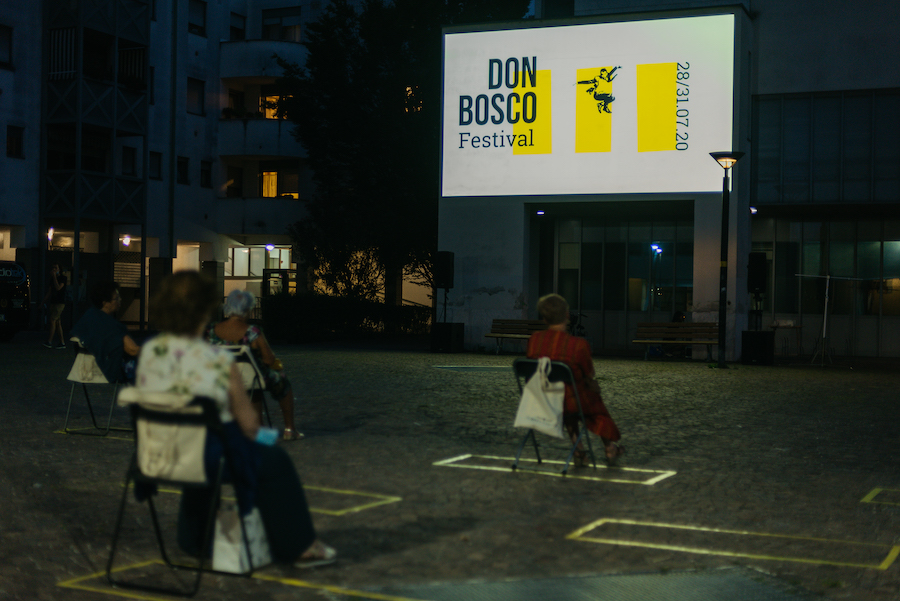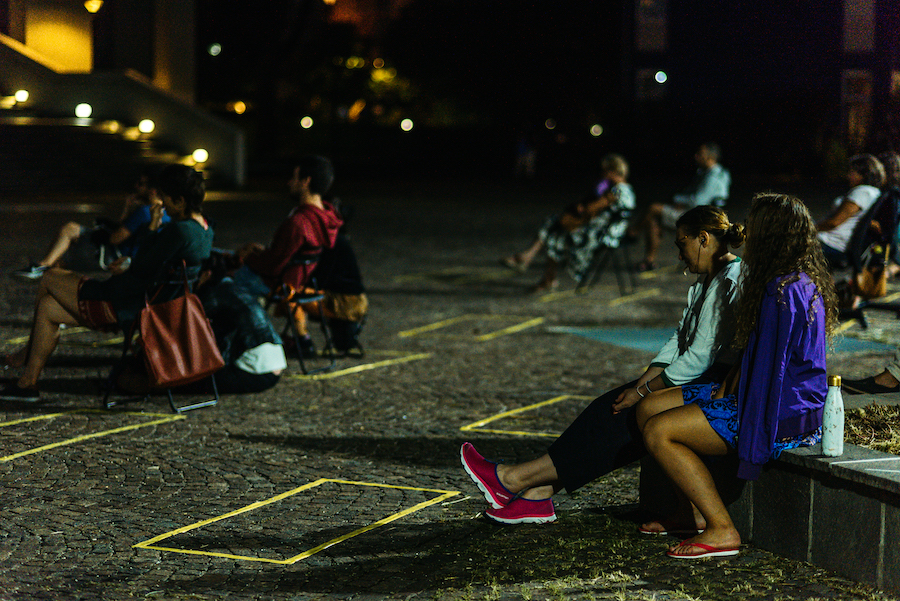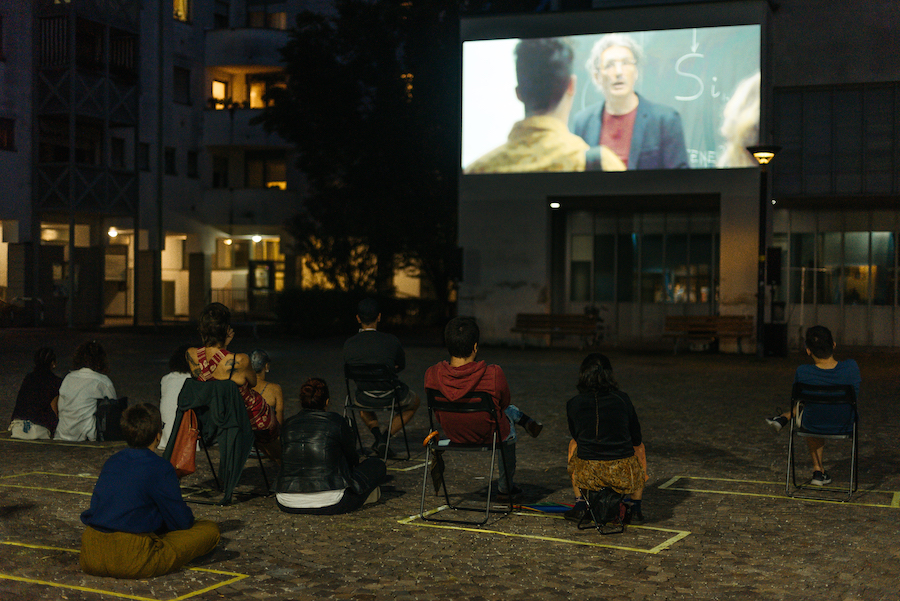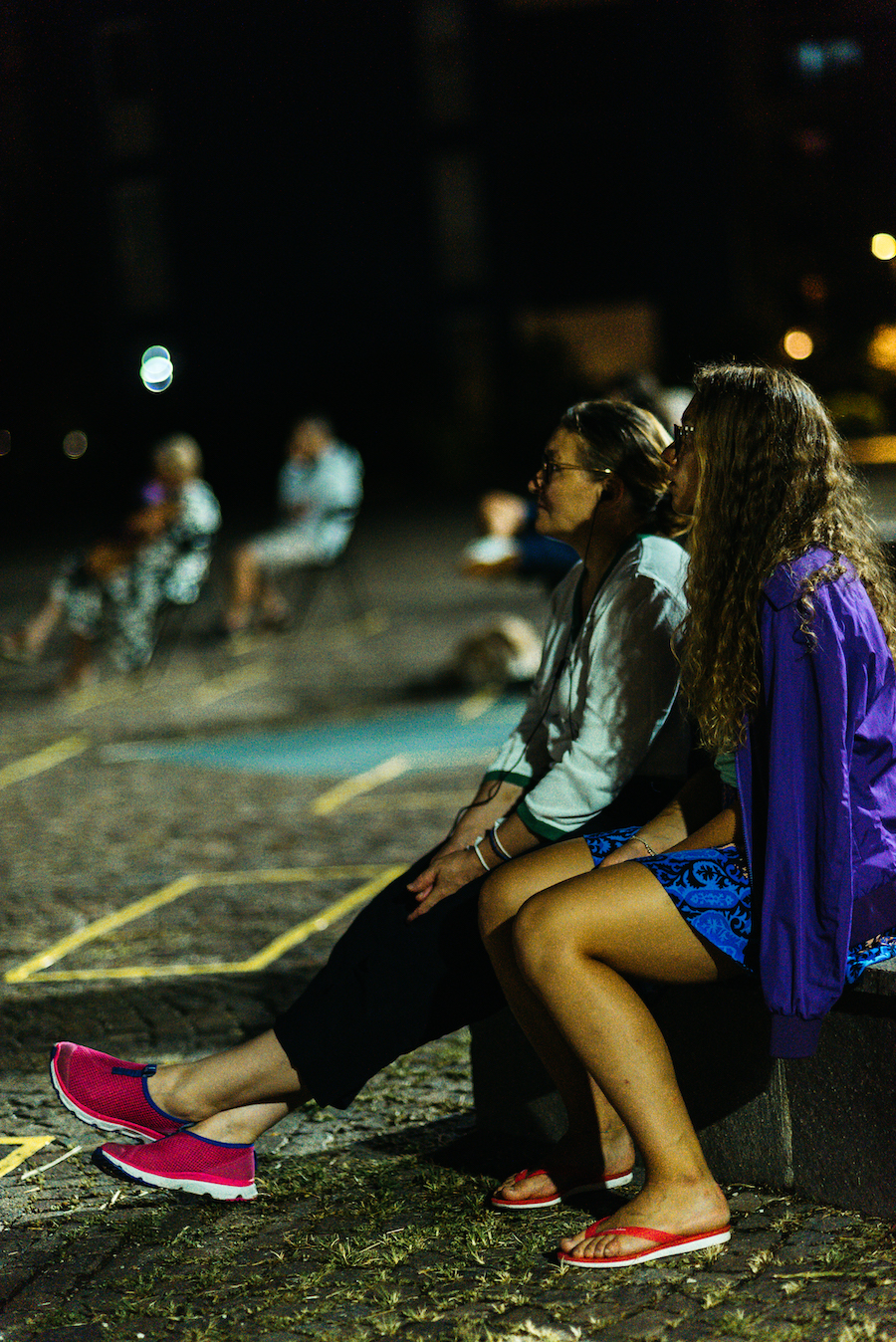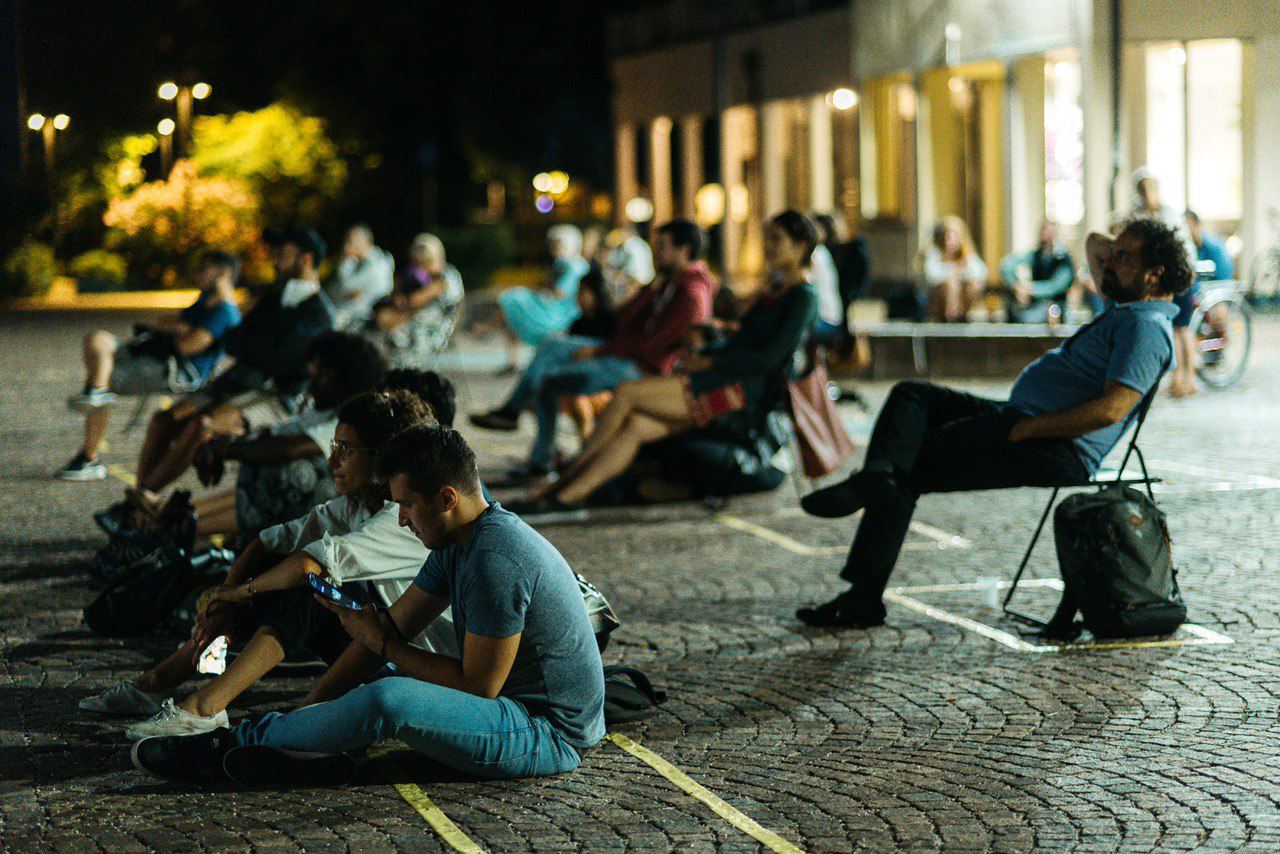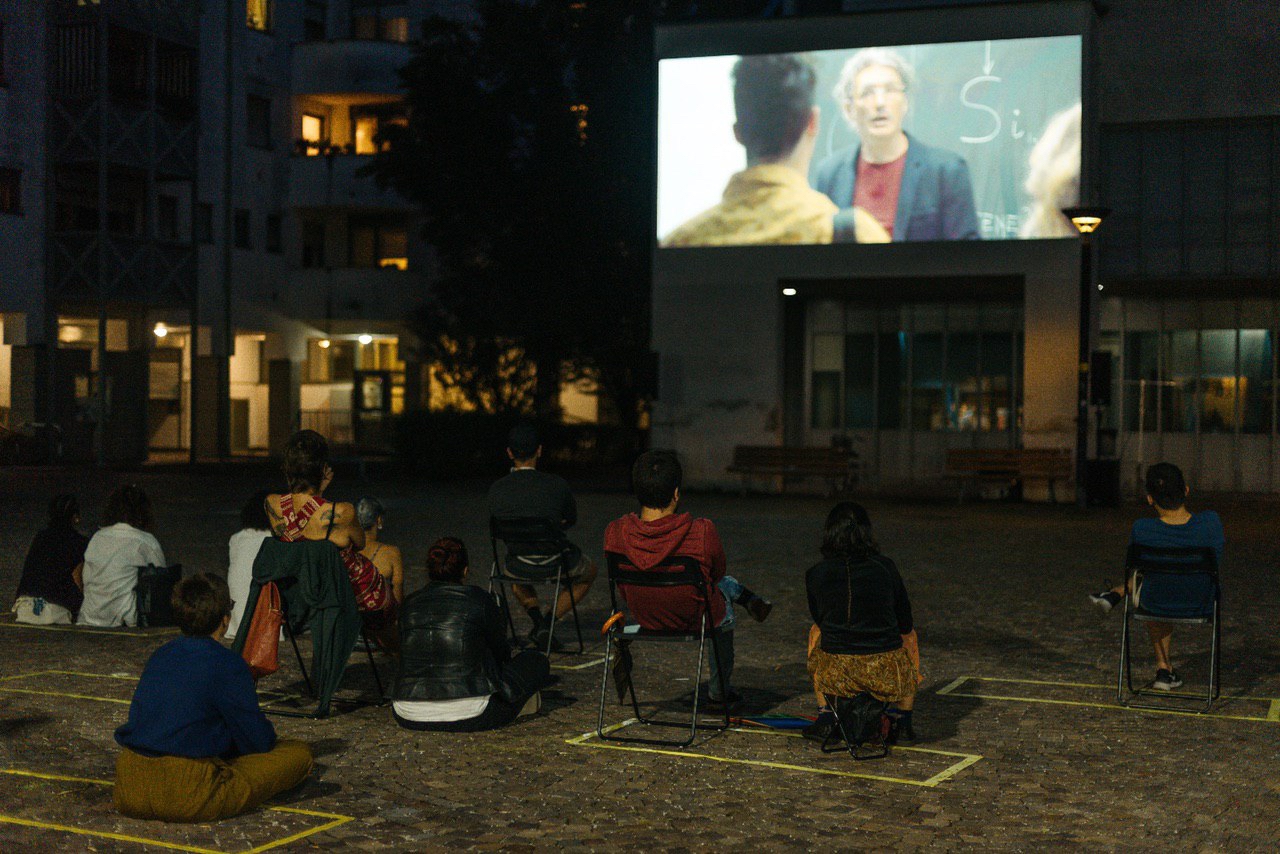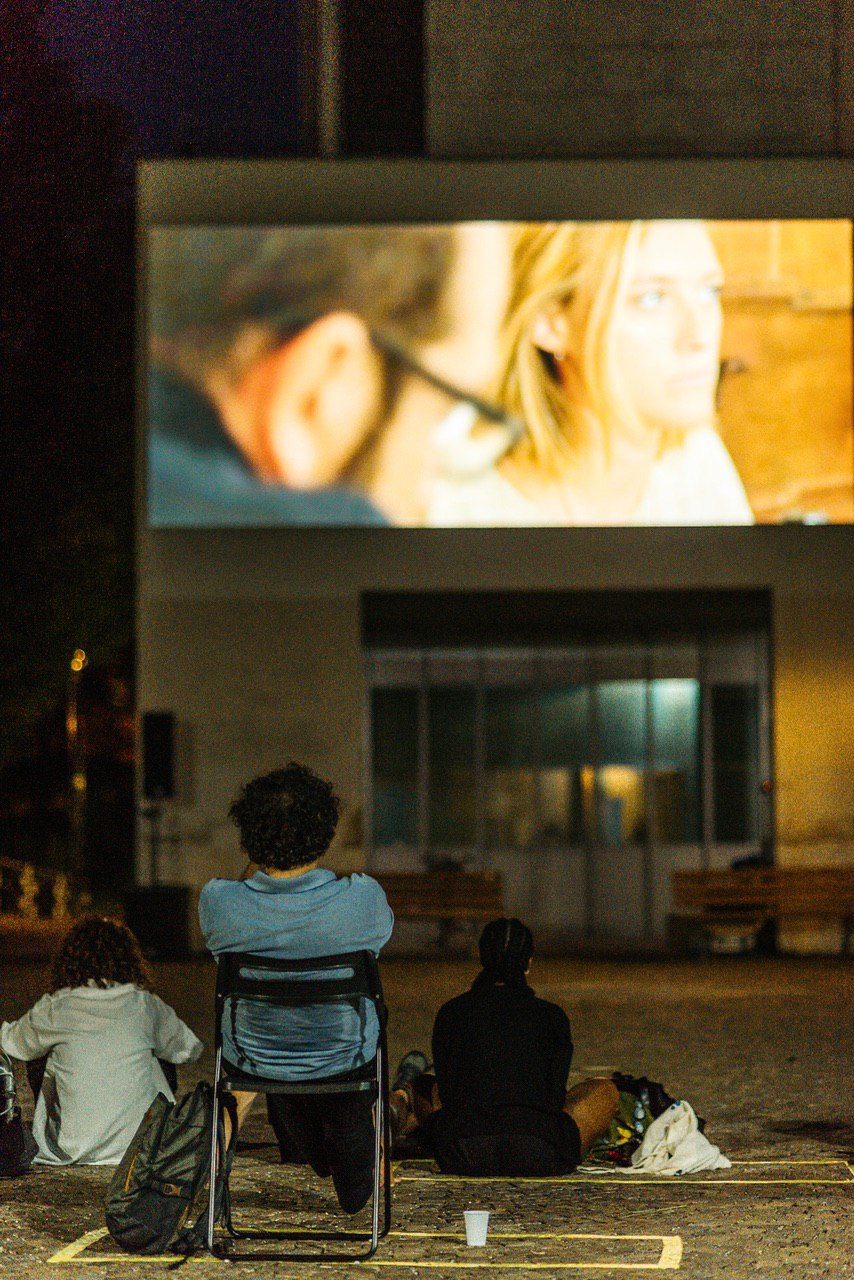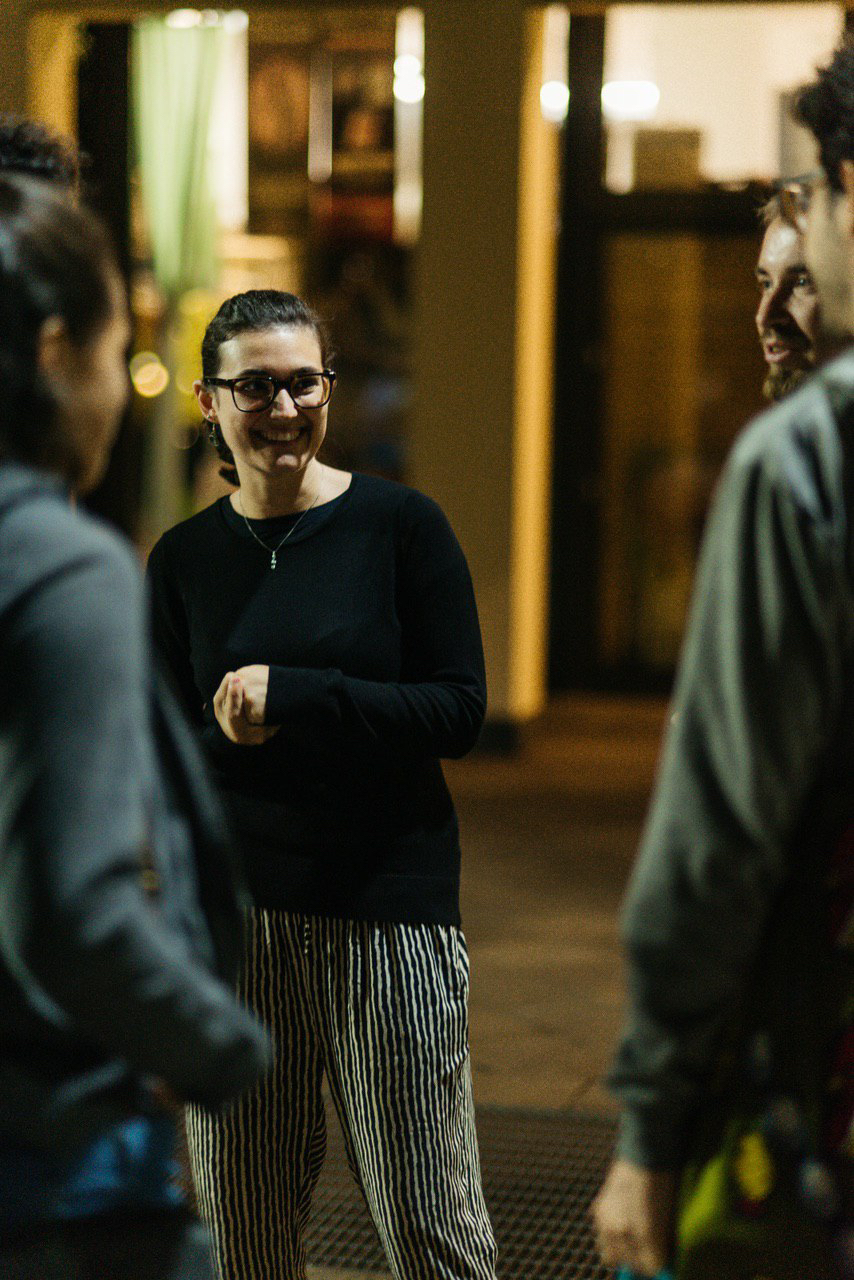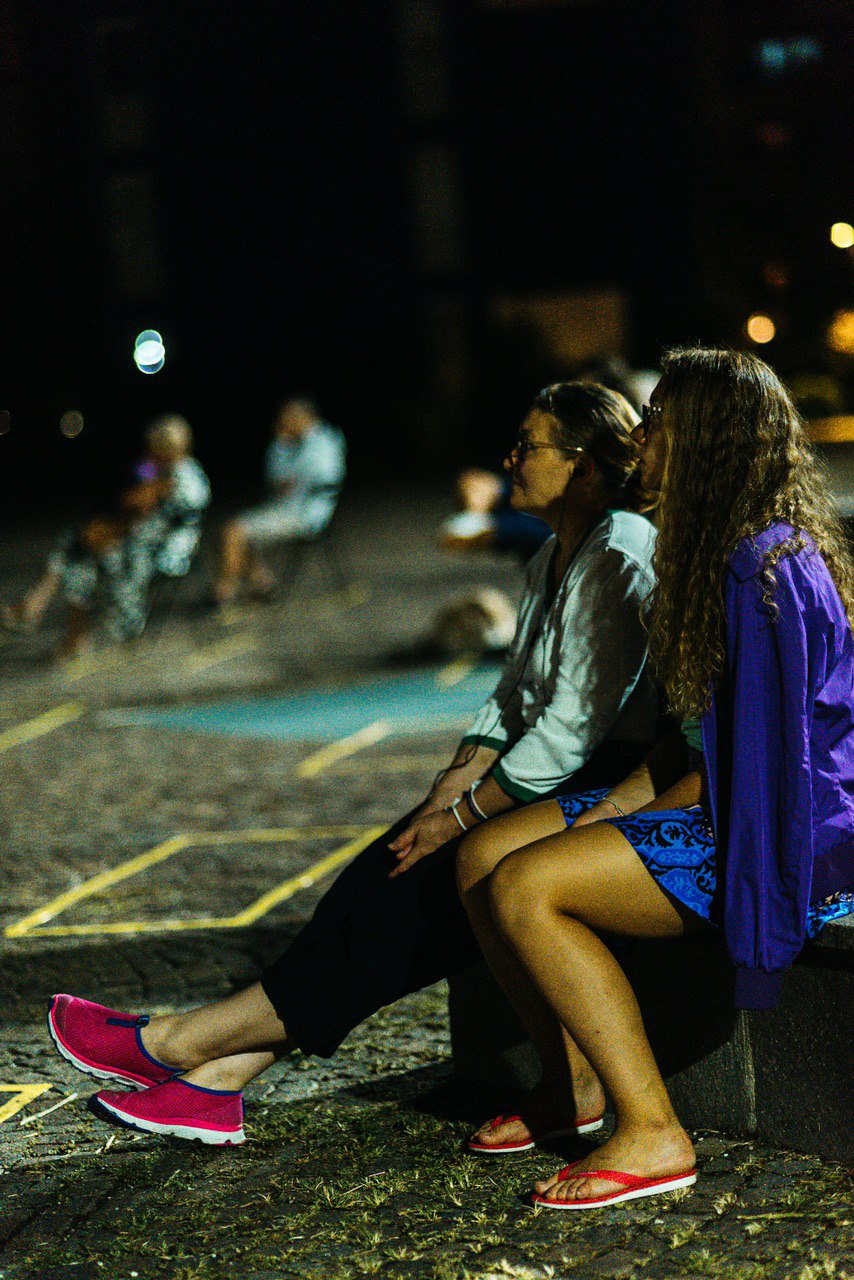A project coming to life, by Rendy Anoh and Shiri Mahler
Back at the age of before Covid-19, when the summer semester had only begun, we met Botteghe di Cultura in the Partner Forum for project-2, which was held in the university.
Botteghe di Cultura is a joined social association, made of four initiatives, in the heart of Don Bosco district. They came together with representatives of the Youth Policies Office They approached us with an invitation for a design project to revive Piazza Don Bosco and re-connect the community around it.
The day after the Partner-Forum was the first day of the rest of the semester. We were informed that the university is being shut down for two weeks, to avoid corona infections.
But we were intrigued by our design-opportunity, and we were caught up in the possibilities we gave this short-term closer no attention and dove right into our research.
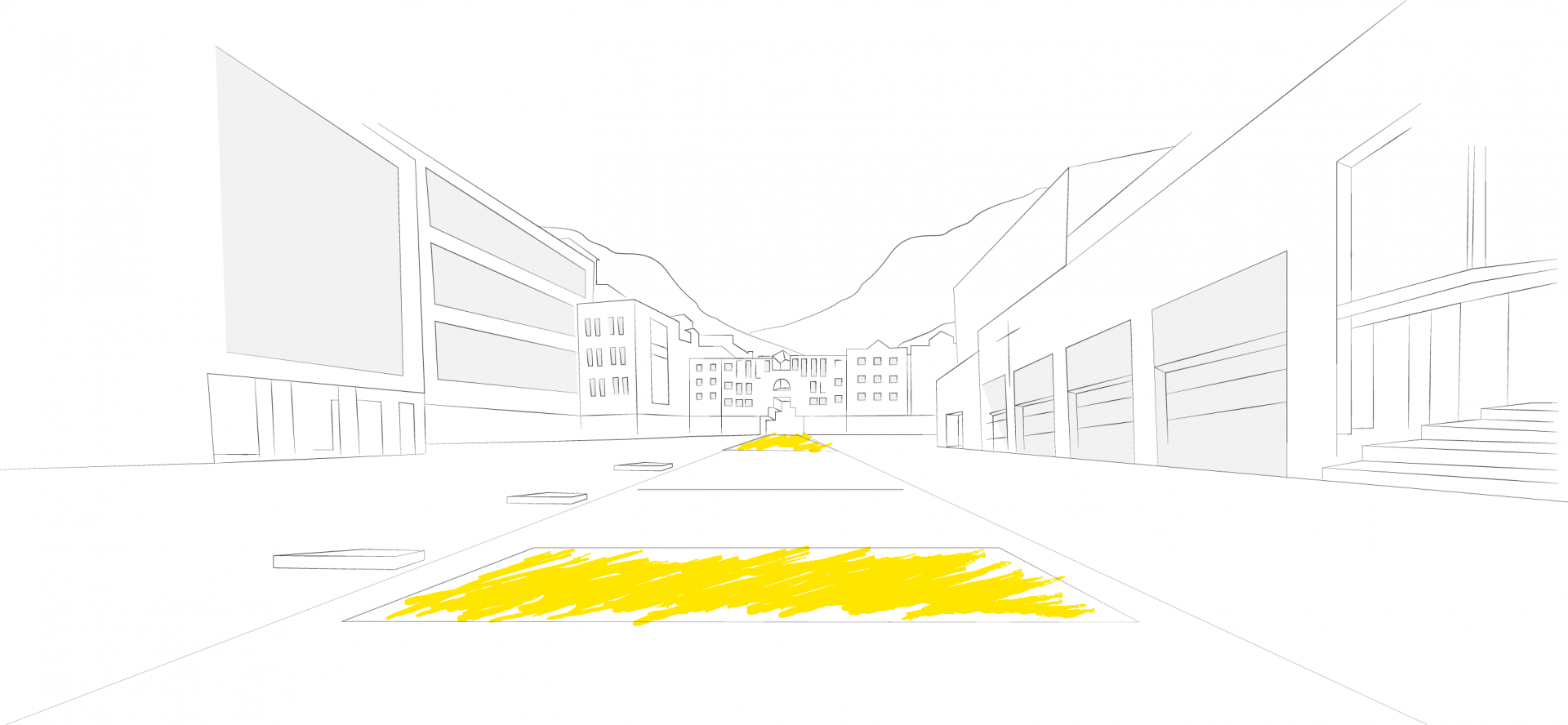
Piazza Don Bos a large and abandoned piazza, located in a divided neighborhood in Bolzano. From our initial research, we realized the piazza is suffering from 3 levels of separation.
At the architectural level, years of rebuilding in the area have divided the piazza into small little squares, with a main road crossing in the middle, and many buildings mazing the pedestrian stroll.
At the usability level, the little squares had different owners, with various resources to invest in shades and sitting arrangements, leaving the largest of the squares naked.
The third is at the social level. With two aspects, historically, this place is a source of social conflict, which resulted in a divided community in ages, languages, customs, and nationality. Second, a trend rising in contemporary lifestyle, the abandonment of public places, as part of a fast-paced lifestyle and the move towards online communities.
Immediately we knew, our focus would go to the social, which matches both our abilities, interests, and the existing time frame.

When we reached the conclusion-stage of this research, we were well in the middle of the quarantine. We were no longer able to disregard the situation and dwell ourselves in work. Not only were we locked up in our houses, separated from other friends and family, but we were also separated from our research subject. We were studying a public space without seeing it or being able to reach the community around it. We were frustrated.
Our conversations wandered off into despair, asking ourselves what is the need for public space in the current situation. We discussed the new uses and new interaction of by-passers in the street. and then in the despair – a new idea was conceived.

We have reached two major perceptions regarding the COVID-19 situation
First, hat Covid-19 has accelerated the already existing trend mentioned – the abandonment of public-space and the move towards online communities.
Second, Covid-19 has shortened our physical range and so made us more dependent on the near environment and community.
We decided that our way of reviving the square, is to resolve the contrast between these two distinctions, we wanted to find a way to break the dichotomy between public and private in the public space.
So we decided to take the new communication style out of the house. To turn the wall of the piazza into a vertical common, a meeting place that recreates the online meeting in the public space, in a way that will allow spontaneous meetings and connection through culture and creation in the public space, even under the most absolute closure.
The idea was to move from “social distance” to “physical distance + social connections”.

And so, together with Patrizia Corriero, and Giulia Schembri of Youth Magazine (Botteghe di Cultura), we designed, produced, and planned a festival that reinvents the square and uses the corona-media-approach – zoom calls, and online culture.
The festival was projected-live, streamed online, and also broadcast on the radio (for non-online populations), so no matter what the status of “social distance” defined by law, the festival will continue and dynamically take on a new shape.
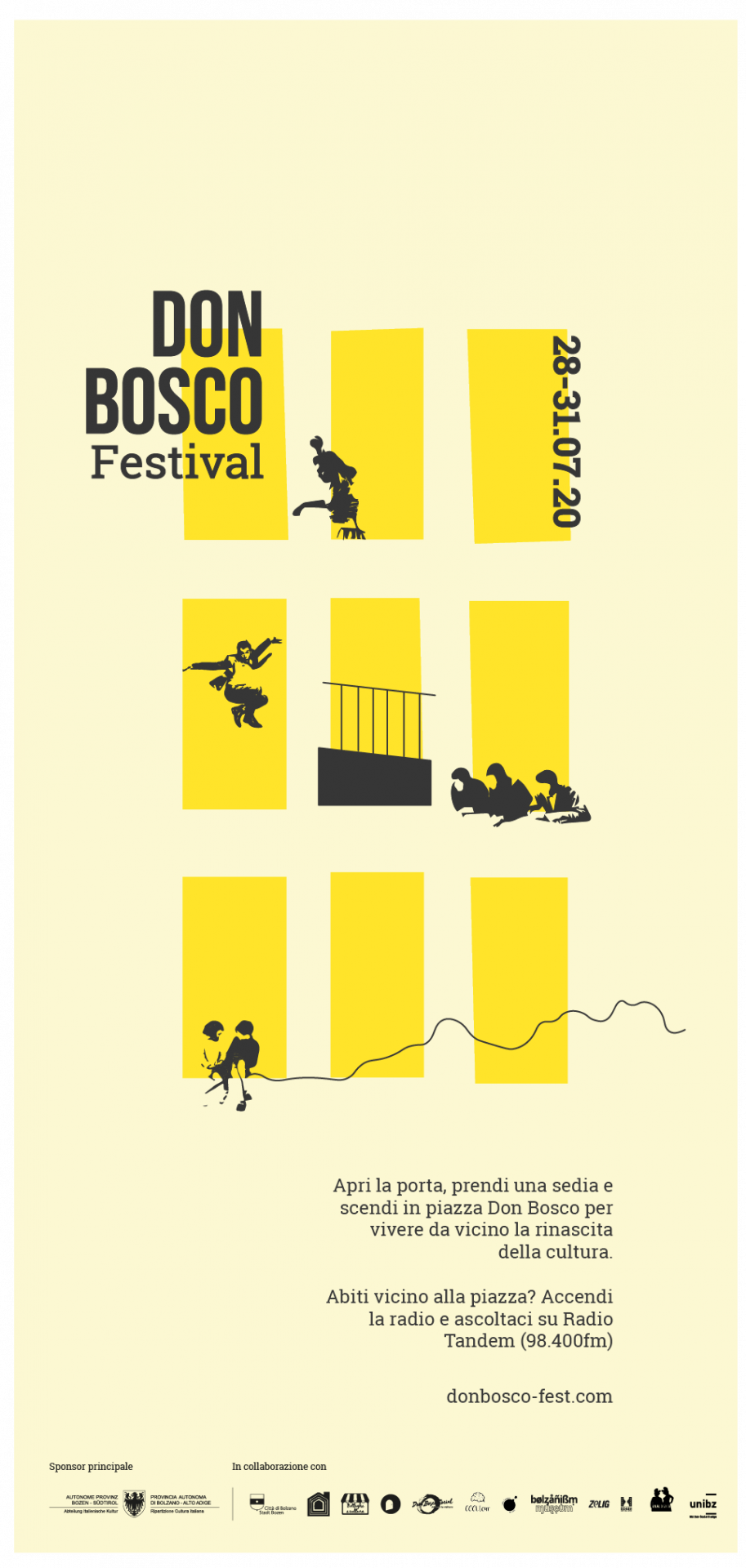
To our delight, the province was enthusiastic and decided to pick up the project –
So in the last four days of July, we projected local content and works by district residents, on the square walls, allowing people to connect from home or the square to video, comment, and produce online calls and meetings that will be displayed on the walls during the screening.

We are writing this post today, on the second of August, two days after the festival ended, and still, we are speechless. Watching the dreams we contrived while being cooped up in our houses, come to life was more then we could have expected. And seeing Piazza Don Bosco come to life and take on a new shape for four days in a row was astonishing.
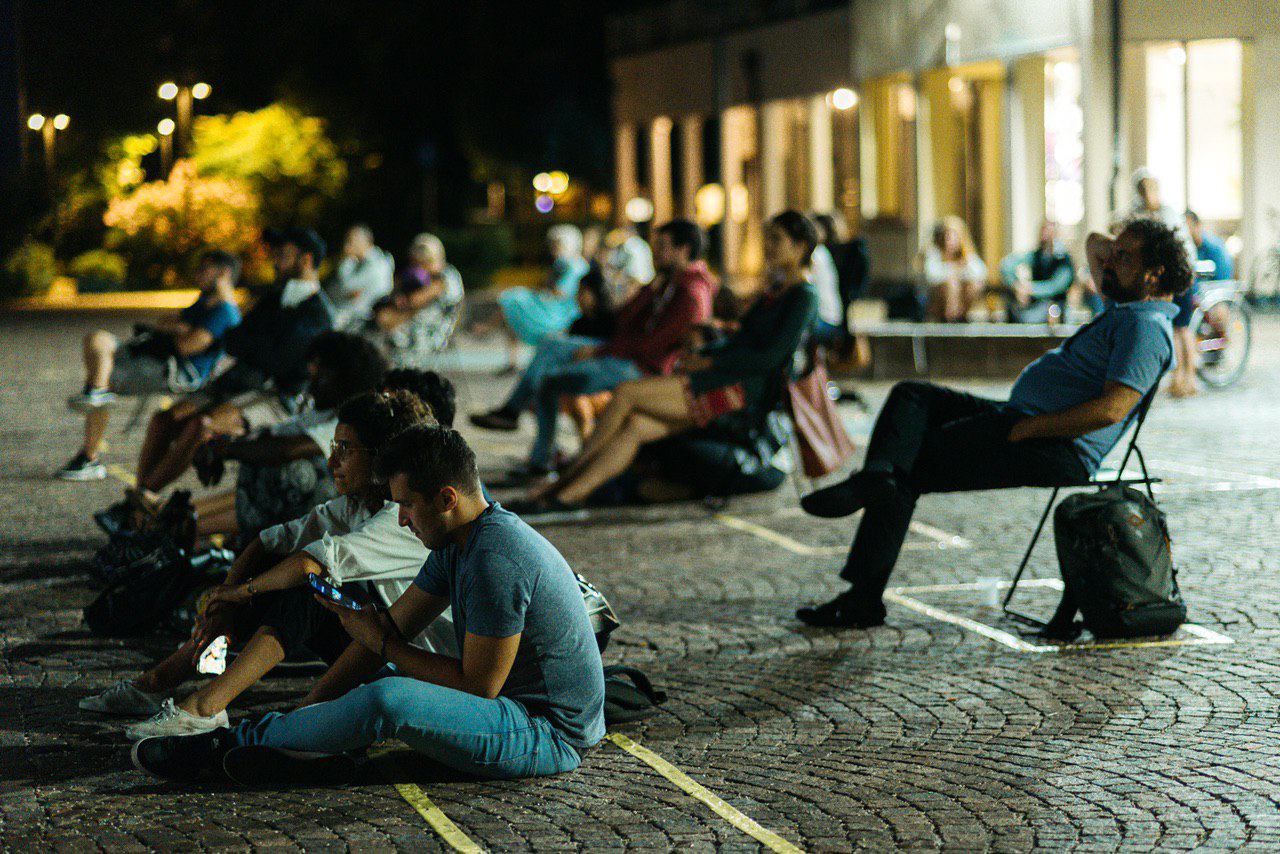
And while it was fun meeting university friends, and young people arriving to enjoy the local content. We were especially moved by the older population that returned every evening, to watch from their balconies or sit in the piazza, telling us that for them, this event was a breath of fresh air.

We are already looking forward to joining in as guests for the next edition of the Don Bosco Festival.



